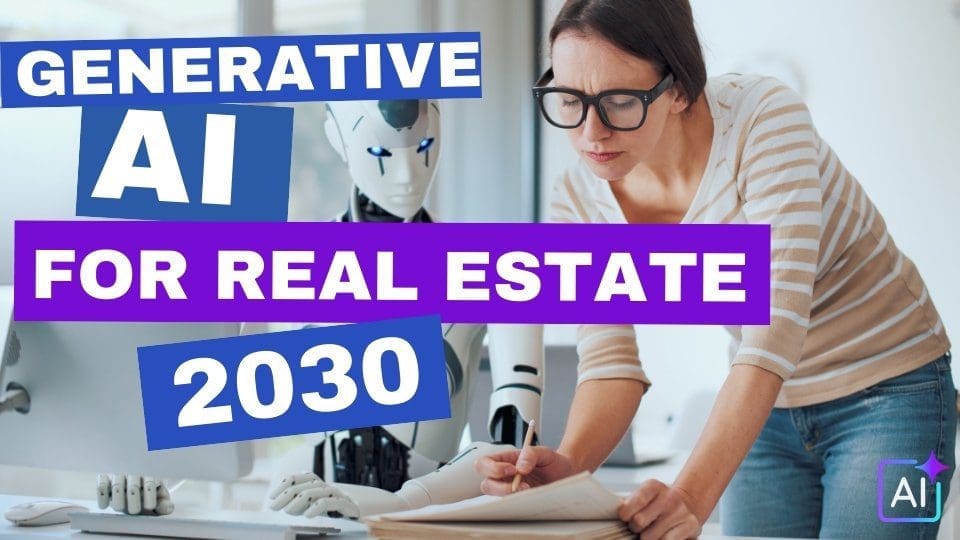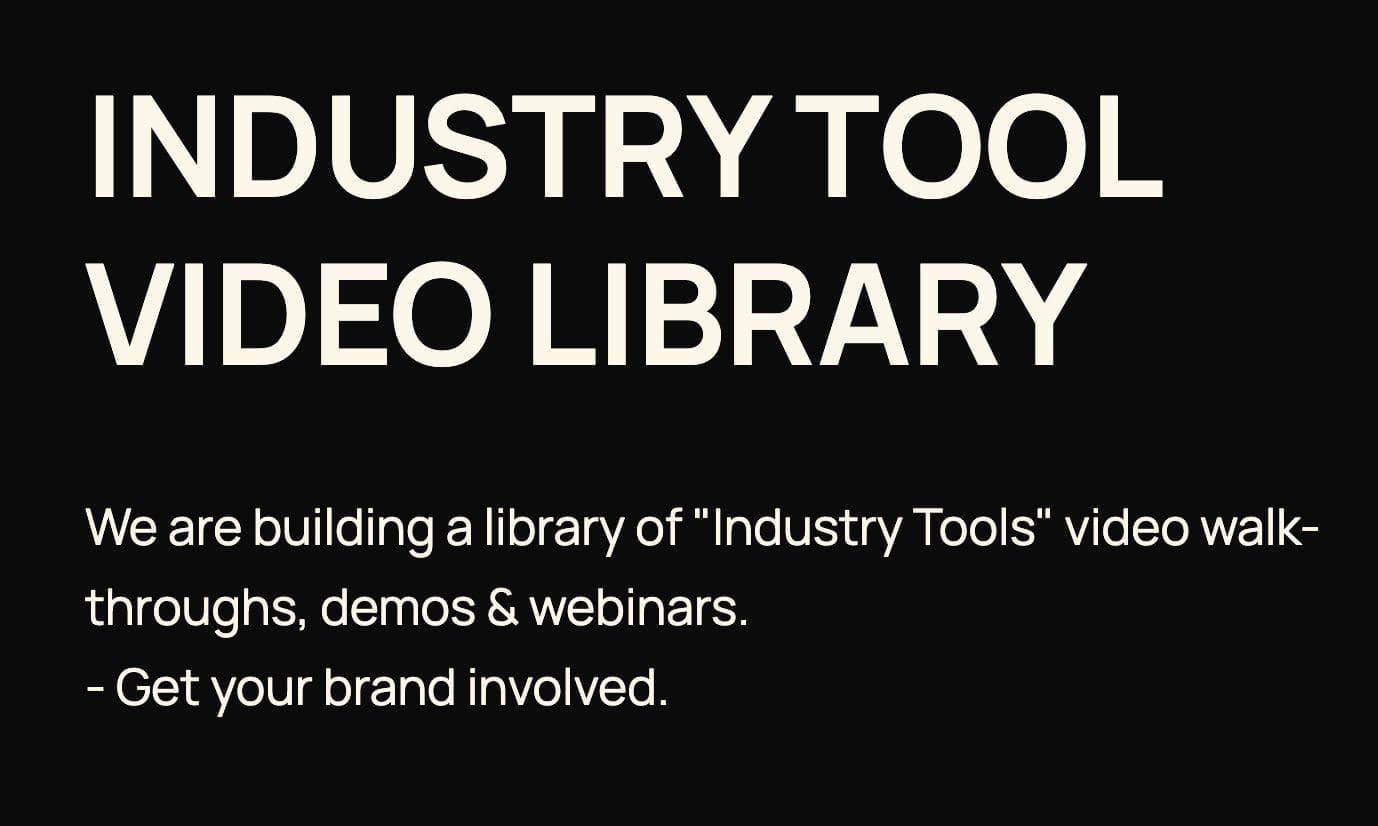AI Learning Centres:
- AI – Learn The Basics
- Get The Most From ChatGPT
- Branding in The Age of AI
- AI for Client Experience
- AI For Prospecting
- AI For Marketing
- AI For Listings & Ads
- Team Adoption of AI
- AI For PM
- AIO & Generative Search
- AI For Operations & Efficiency
- AI For Market Research & Analysis
- AI Ethics, Privacy & Compliance in Real Estate
Digital Marketing & Social Media Learning Centres:
Guides & Downloads

Generative AI & Real Estate 2030
1 | The Next Wave after Portals and Social
Realestate.com.au put listings online, social media turned every agent into a publisher, and now generative artificial intelligence is poised to become an even larger shift. Traditional “narrow” AI analyses data; generative models go further and create words, images, video, code and even design suggestions in seconds. They learn from vast public datasets and, crucially, from an agency’s internal archives of photos, floor plans, CRM notes and maintenance reports.
Consultants estimate that generative AI can lift global real-estate operating profit by ten to fifteen per cent before the decade ends. In local terms, a mid-sized network writing three million dollars in gross commission could capture an extra quarter million through faster deals, slimmer overheads and more engaging client experiences.
That upside is real, yet numbers cannot communicate how a working week might feel once these tools become as common as DocuSign. This article blends what is already possible with what industry trend-lines point toward by 2030, giving every principal, BDM and property manager a practical frame of reference. Total reading time: about seven minutes.
2 | Four Deployments That Work Right Now
Chat concierges that never sleep
Today’s GPT-style assistants learn your inspection calendar, brand voice and suburb knowledge in an afternoon. They can book viewings, answer questions such as “What’s the strata fee?” and push a conversation summary directly into your CRM. Offices that have switched on twenty-four-hour chat report fewer missed calls and higher lead-to-appointment conversion.
One-click marketing collateral
Hand the model a listing sheet and receive a full suite of materials: brochure, Instagram carousel, LinkedIn post, letterbox flyer and a fifteen-second reel, all in consistent fonts and colours. Designers still polish hero pieces, but eighty per cent of routine production time disappears.
Rapid design ideation
Upload a floor plan or smartphone photo of an empty room; the model proposes three kitchen layouts or a fully furnished living area in mid-century style. Vendors preview possibilities before spending on physical staging, renovators compare upgrade options, councils may soon accept AI-assisted shadow diagrams and energy models for fast-track approvals.
Strategic research in minutes
Feed council minutes, infrastructure announcements, census trends and economic reports into the engine. Out comes a concise suburb outlook showing potential rezonings and rent-demand inflection points. Junior analysts who once sifted PDFs shift to higher-order tasks while principals make faster, better-evidenced expansion calls.
3 | Guardrails for Ethics, Accuracy and Compliance
Generative systems can hallucinate, reproduce hidden bias or be coaxed into misleading imagery. Australian regulators already police under-quoting, doctored photography and privacy breaches; fresh rules are likely to require:
Clear disclosure: watermark or label synthetic images and text.
Audit trails: keep prompts and draft iterations on file.
Fair-decision checks: tenant-scoring or lead-ranking tools must avoid unlawful discrimination.
Domestic data hosting where personal or financial information is involved.
Practical steps for agencies:
Human-in-the-loop review for all outward-facing content.
Privacy by design: mask personal data before sending prompts, encrypt everything at rest.
Bias testing: sample outputs for skew toward any suburb, property type or audience.
Continuous fine-tuning on Australian language conventions and legal terms.
4 | A Tuesday in 2030
Below is a plausible working day derived from technologies already in pilot programs, simply expanded across the industry.
07:15 – equity alert
A digital watch taps your wrist: a homeowner in Marrickville just crossed a mortgage-balance threshold that often precedes a decision to sell. Overnight, the system drafted a tailored market update email and two pricing strategies. You review, personalise a greeting and press send before breakfast.
09:00 – smart lease autopilot
Rental agreements live as smart contracts on a permissioned blockchain. When a smoke detector sends proof of annual compliance, bond-release conditions renew automatically. CPI rent adjustments trigger only after the AI confirms the latest index. Tenants pay with one tap, and arrears messages are friendly, context-aware and personalised.
11:30 – energy-optimised strata
An “AI facilities manager” balances solar, battery and grid power, schedules lift servicing at midnight, orders parts before failure and projects levy requirements twelve months ahead. Strata fees and carbon emissions fall together.
13:00 – mixed-reality inspection
Prospects put on lightweight AR glasses in a Balmain terrace. The AI overlays an attic conversion, swaps laminate counters for stone and recolours walls in sage green. Renovation quotes update in real time. Overseas buyers join as holographic avatars and point at features from thousands of kilometres away.
15:00 – data co-operative insight
Portals, banks and conveyancers share anonymised transaction feeds through a secure API. Your desktop dashboard updates a hyper-local price index every morning, revealing that terrace values within four streets of a new light-rail stop just lifted two per cent in a week.
17:30 – post-inspection wrap-up
A voice assistant transcribes buyer feedback, updates hot-buyer lists and writes a thank-you SMS to each attendee using their observed interest points. The only manual action is your confirmation tap.
5 | Bridging 2024 Reality and the 2030 Vision
Collect and clean
Launch a thirty-day “data detox.” Merge duplicate contacts, fix suburb spellings, label photos by room type. Good data multiplies AI accuracy.
Deploy low-risk pilots
Pick a narrow problem such as virtual staging for vacant units or an after-hours chatbot. Track time saved, engagement lifts and any issues.
Create a prompt library
Store best-practice prompts in a shared drive. Constant prompt reuse keeps brand voice consistent and reduces mistakes.
Formalise human checks
Define which outputs need dual sign-off, how to label synthetic materials and what version history to save.
Upskill every week
Schedule fifteen minutes for staff to experiment with a new AI feature. Pair senior negotiators with tech-savvy juniors.
Engage suppliers early
Ask CRM providers, portals and insurers about their integration roadmaps. Shared APIs prevent duplicated effort and lower costs.
Monitor regulation
Subscribe to updates from the Office of the Australian Information Commissioner and state Fair-Trading bodies. Proactive participation shapes practical rules.
6 | Keep the Human Core
Property deals are still about shelter, security and belonging. Use technology to clear administrative clutter, not to distance yourself from people.
Diversity in project teams helps uncover blind spots.
Authentic storytelling builds lasting trust.
Compassionate judgment remains irreplaceable; a late-paying tenant may be facing systemic hurdles rather than wilful neglect.
Generative AI is arriving faster than any previous industry technology. Agencies that view it as tomorrow’s novelty risk falling behind; agencies that rush in without governance invite legal trouble. The winning mindset marries disciplined data hygiene, thoughtful experimentation and transparent oversight with the timeless skills of negotiation and empathy.
Pilot wisely, govern openly, learn relentlessly, and by 2030 your office will not feel futuristic; it will feel like a natural extension of what great agents already do—blend insight, empathy and local expertise to move people forward.
Author: Ken Hobson
ken@agentslibrary.com
https://www.linkedin.com/in/ken-hobson/






